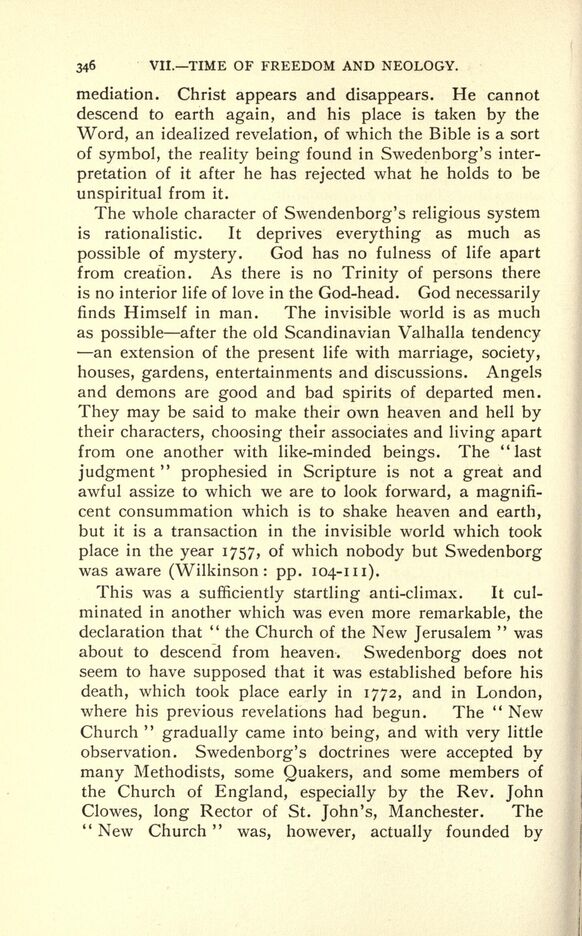
Full resolution (JPEG) - On this page / på denna sida - VII. The Church in the “Time of Freedom” and Period of Neology (1718—1811 A.D.)

<< prev. page << föreg. sida << >> nästa sida >> next page >>
Below is the raw OCR text
from the above scanned image.
Do you see an error? Proofread the page now!
Här nedan syns maskintolkade texten från faksimilbilden ovan.
Ser du något fel? Korrekturläs sidan nu!
This page has never been proofread. / Denna sida har aldrig korrekturlästs.
346 VII. TIME OF FREEDOM AND NEOLOGY.
mediation. Christ appears and disappears. He cannot
descend to earth again, and his place is taken by the
Word, an idealized revelation, of which the Bible is a sort
of symbol, the reality being found in Swedenborg s inter
pretation of it after he has rejected what he holds to be
unspiritual from it.
The whole character of Swendenborg s religious system
is rationalistic. It deprives everything as much as
possible of mystery. God has no fulness of life apart
from creation. As there is no Trinity of persons there
is no interior life of love in the God-head. God necessarily
finds Himself in man. The invisible world is as much
as possible after the old Scandinavian Valhalla tendency
an extension of the present life with marriage, society,
houses, gardens, entertainments and discussions. Angels
and demons are good and bad spirits of departed men.
They may be said to make their own heaven and hell by
their characters, choosing their associates and living apart
from one another with like-minded beings. The "last
judgment
"
prophesied in Scripture is not a great and
awful assize to which we are to look forward, a magnifi
cent consummation which is to shake heaven and earth,
but it is a transaction in the invisible world which took
place in the year 1757, of which nobody but Swedenborg
was aware (Wilkinson: pp. 104-111).
This was a sufficiently startling anti-climax. It cul
minated in another which was even more remarkable, the
declaration that
"
the Church of the New Jerusalem
"
was
about to descend from heaven. Swedenborg does not
seem to have supposed that it was established before his
death, which took place early in 1772, and in London,
where his previous revelations had begun. The "
New
Church "
gradually came into being, and with very little
observation. Swedenborg s doctrines were accepted by
many Methodists, some Quakers, and some members of
the Church of England, especially by the Rev. John
Clowes, long Rector of St. John s, Manchester. The
"
New Church "
was, however, actually founded by
<< prev. page << föreg. sida << >> nästa sida >> next page >>